-
 Bitcoin
Bitcoin $121700
1.50% -
 Ethereum
Ethereum $4724
2.29% -
 XRP
XRP $3.230
-1.48% -
 Tether USDt
Tether USDt $1.000
0.05% -
 BNB
BNB $856.9
0.95% -
 Solana
Solana $203.2
2.41% -
 USDC
USDC $0.9998
0.02% -
 Dogecoin
Dogecoin $0.2420
-2.94% -
 Cardano
Cardano $0.9878
13.62% -
 TRON
TRON $0.3652
2.74% -
 Chainlink
Chainlink $23.35
-0.14% -
 Hyperliquid
Hyperliquid $46.38
3.82% -
 Stellar
Stellar $0.4462
-1.59% -
 Sui
Sui $3.963
0.50% -
 Bitcoin Cash
Bitcoin Cash $605.7
-0.07% -
 Hedera
Hedera $0.2686
1.64% -
 Ethena USDe
Ethena USDe $1.001
0.00% -
 Avalanche
Avalanche $25.03
0.69% -
 Litecoin
Litecoin $128.1
-2.47% -
 Toncoin
Toncoin $3.518
0.37% -
 UNUS SED LEO
UNUS SED LEO $9.264
0.22% -
 Shiba Inu
Shiba Inu $0.00001362
-2.28% -
 Uniswap
Uniswap $11.50
-2.45% -
 Polkadot
Polkadot $4.195
-0.48% -
 OKB
OKB $101.9
-9.51% -
 Bitget Token
Bitget Token $4.783
1.11% -
 Dai
Dai $0.9999
0.01% -
 Cronos
Cronos $0.1639
-2.59% -
 Pepe
Pepe $0.00001187
-3.61% -
 Aave
Aave $326.2
1.42%
How to develop DApps in blockchain?
DApp development involves creating decentralized, open-source applications that run on blockchain networks like Ethereum or Binance Smart Chain.
Jun 14, 2025 at 10:01 pm
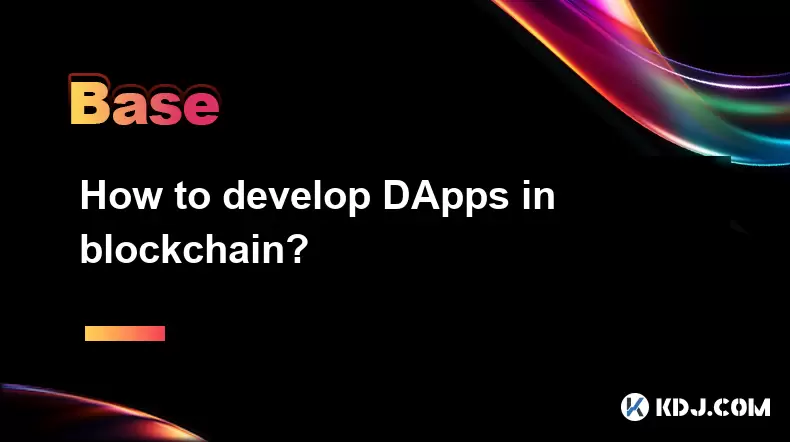
Understanding the Basics of DApp Development
Developing decentralized applications (DApps) in blockchain involves creating software that runs on a peer-to-peer network rather than relying on centralized servers. A DApp must be open-source, operate autonomously, and have tokens or digital assets as part of its functionality. Unlike traditional apps, DApps interact with smart contracts deployed on a blockchain such as Ethereum, Binance Smart Chain, or Solana.
Before diving into development, it's crucial to understand what differentiates DApps from regular applications. One key feature is their backend code running on a decentralized network, which means no single entity controls the entire system. This ensures transparency, immutability, and resistance to censorship.
Selecting the Right Blockchain Platform
Choosing an appropriate blockchain platform is essential for DApp development. Ethereum remains the most popular choice due to its mature ecosystem, Solidity programming language, and extensive tooling support. Other platforms like Binance Smart Chain, Tron, and Solana offer alternatives with varying trade-offs in speed, cost, and decentralization.
Each platform has its own set of protocols and tools. For instance, BSC offers lower gas fees compared to Ethereum, making it suitable for high-frequency transactions. On the other hand, Solana is known for fast transaction processing, ideal for real-time applications.
When selecting a blockchain, consider factors such as:
- Smart contract capabilities
- Transaction throughput and latency
- Developer community and documentation
- Cost of deployment and usage
Setting Up the Development Environment
To begin developing a DApp, you need to configure your development environment. Start by installing Node.js and npm (Node Package Manager), which are foundational for most blockchain development tools. Once installed, you can use them to install frameworks and libraries specific to blockchain development.
Truffle Suite is one of the most widely used development frameworks for Ethereum-based DApps. It includes tools for compiling, testing, and deploying smart contracts. Another useful tool is Ganache, which allows developers to run a personal blockchain locally for testing purposes.
Key steps to set up your environment:
- Install Node.js and npm
- Install Truffle globally using
npm install -g truffle - Set up Ganache for local blockchain simulation
- Choose a code editor like Visual Studio Code
- Install MetaMask browser extension for interacting with the blockchain
Writing and Deploying Smart Contracts
Smart contracts form the core logic of any DApp. These are self-executing contracts written in languages like Solidity (for Ethereum) or Rust (for Solana). Writing secure and efficient smart contracts is critical, as vulnerabilities can lead to irreversible losses.
Once the contract is written, it needs to be compiled and deployed to the chosen blockchain. Using Truffle, you can compile your Solidity files and deploy them to either a local testnet via Ganache or a public testnet like Ropsten or Goerli.
Here’s how to proceed:
- Write the contract in
.solfiles inside thecontractsdirectory - Create migration scripts under the
migrationsfolder - Use
truffle compileto generate ABI (Application Binary Interface) - Run
truffle migrate --network [network-name]to deploy the contract
After deployment, the contract address becomes accessible to the frontend application.
Building the Frontend for Your DApp
The frontend of a DApp connects users to the blockchain through web interfaces. Unlike traditional apps, DApp frontends communicate with smart contracts using Web3.js or Ethers.js libraries. These libraries enable interaction with the blockchain via MetaMask or other wallet extensions.
To create a functional frontend:
- Use React.js or Vue.js for dynamic user interfaces
- Integrate Web3.js to detect and connect to the user's wallet
- Fetch contract data using the ABI and contract address
- Enable users to send transactions and read blockchain data
For example, to connect MetaMask:
- Check if
window.ethereumis present - Request account access using
ethereum.request({ method: 'eth_requestAccounts' }) - Initialize a Web3 instance with the provider
- Load the contract using the ABI and deployed address
This integration allows users to interact with the DApp securely and seamlessly.
Frequently Asked Questions
Q1: What tools are necessary for DApp development besides Truffle?
Besides Truffle, developers often use Hardhat for more advanced contract testing, Remix IDE for quick prototyping, and IPFS for decentralized storage solutions. Tools like OpenZeppelin provide secure contract templates and libraries.
Q2: Can I develop a DApp without knowing Solidity?
While Solidity is the primary language for Ethereum smart contracts, some platforms support other languages. For example, Solana uses Rust, and there are abstraction layers like Brownie or Vyper that might simplify contract writing. However, understanding Solidity is still highly recommended for Ethereum development.
Q3: How do I test my DApp before deploying it on the mainnet?
Use local blockchains like Ganache for initial testing. Then, deploy to testnets like Ropsten or Sepolia for real-world simulation. Always perform thorough unit tests using frameworks like Mocha or Chai to ensure contract reliability.
Q4: Is it possible to update a deployed smart contract?
Smart contracts are immutable once deployed, meaning they cannot be changed directly. However, developers can implement upgradeable contract patterns using proxy contracts. This approach requires careful planning and introduces additional complexity.
Disclaimer:info@kdj.com
The information provided is not trading advice. kdj.com does not assume any responsibility for any investments made based on the information provided in this article. Cryptocurrencies are highly volatile and it is highly recommended that you invest with caution after thorough research!
If you believe that the content used on this website infringes your copyright, please contact us immediately (info@kdj.com) and we will delete it promptly.
- Kazakhstan's Crypto Leap: Bitcoin ETF and Central Asia's Digital Finance Future
- 2025-08-13 12:45:19
- BlockDAG Presale Blazes Past $371M: Fundraising Frenzy Fuels Crypto Sensation
- 2025-08-13 13:05:21
- Meme Coins: Chasing the 2025 Surge – Which Will Moonshot?
- 2025-08-13 10:25:23
- Bitcoin's Wild Ride: Rally, Pullback, and What's Next
- 2025-08-13 10:25:23
- Bitcoin, Bitmax, and Institutional Demand: A New Era of Crypto Investment
- 2025-08-13 10:45:12
- Solana, ROAM, and Airdrops: What's the Buzz in 2025?
- 2025-08-13 11:35:13
Related knowledge
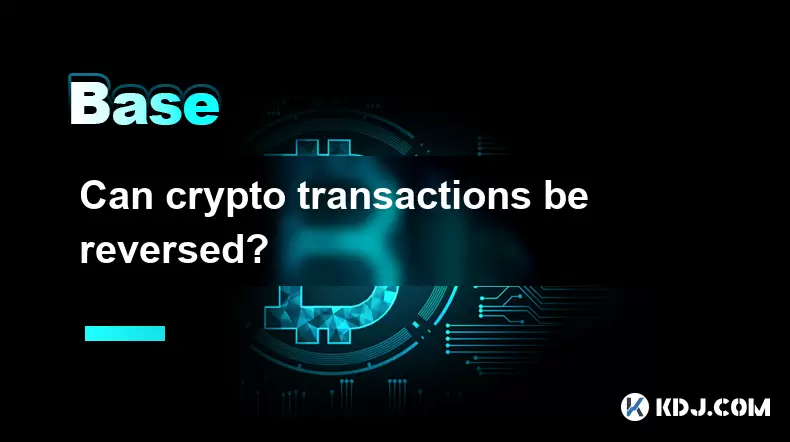
Can crypto transactions be reversed?
Aug 10,2025 at 01:35am
Understanding the Immutability of Blockchain TransactionsCryptocurrency transactions are built on blockchain technology, which is designed to be immut...
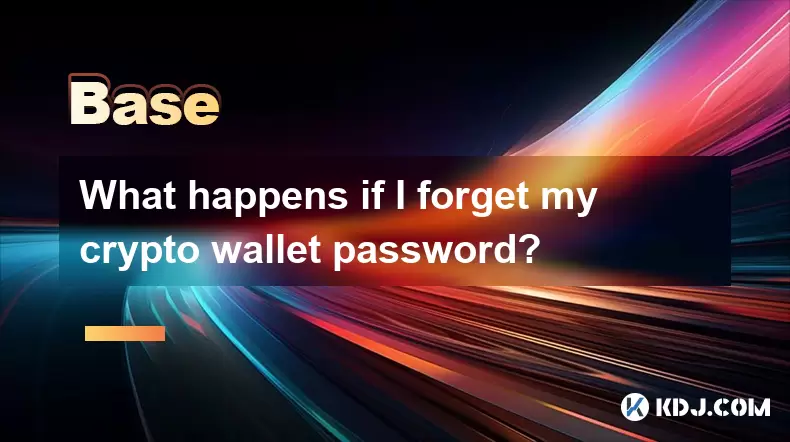
What happens if I forget my crypto wallet password?
Aug 09,2025 at 08:50am
Understanding the Role of a Crypto Wallet PasswordA crypto wallet password serves as a critical security layer that protects access to your digital as...
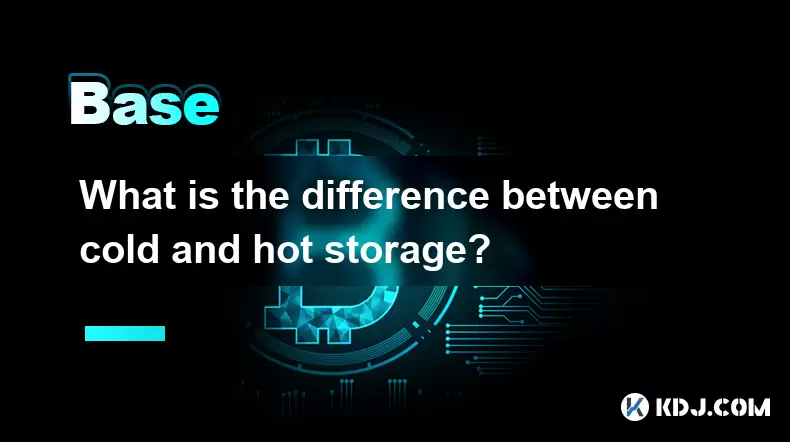
What is the difference between cold and hot storage?
Aug 12,2025 at 01:01am
Understanding Cold Storage in CryptocurrencyCold storage refers to offline methods of storing cryptocurrency private keys, ensuring they are not expos...
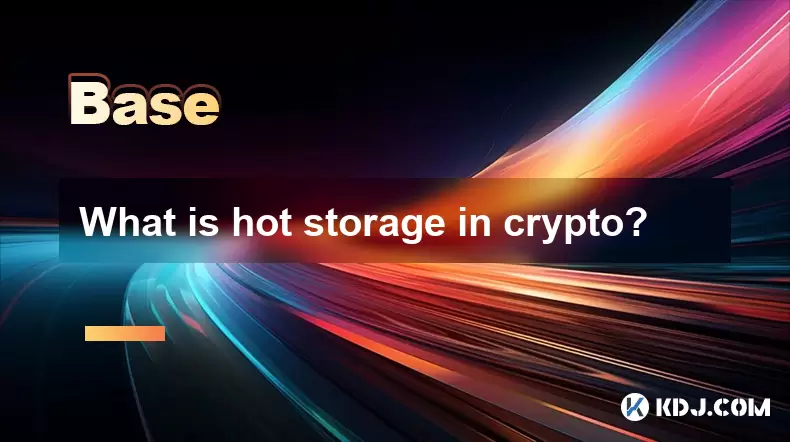
What is hot storage in crypto?
Aug 11,2025 at 07:08am
Understanding Hot Storage in CryptocurrencyHot storage refers to cryptocurrency wallets that are connected to the internet. Unlike cold storage soluti...

What is cold storage in crypto?
Aug 13,2025 at 11:35am
Understanding Cold Storage in CryptocurrencyCold storage in cryptocurrency refers to a method of storing digital assets offline, away from internet-co...

What is the best crypto portfolio tracker?
Aug 10,2025 at 05:08am
Understanding the Role of a Crypto Portfolio TrackerA crypto portfolio tracker is a digital tool designed to help investors monitor the performance of...

Can crypto transactions be reversed?
Aug 10,2025 at 01:35am
Understanding the Immutability of Blockchain TransactionsCryptocurrency transactions are built on blockchain technology, which is designed to be immut...

What happens if I forget my crypto wallet password?
Aug 09,2025 at 08:50am
Understanding the Role of a Crypto Wallet PasswordA crypto wallet password serves as a critical security layer that protects access to your digital as...

What is the difference between cold and hot storage?
Aug 12,2025 at 01:01am
Understanding Cold Storage in CryptocurrencyCold storage refers to offline methods of storing cryptocurrency private keys, ensuring they are not expos...

What is hot storage in crypto?
Aug 11,2025 at 07:08am
Understanding Hot Storage in CryptocurrencyHot storage refers to cryptocurrency wallets that are connected to the internet. Unlike cold storage soluti...

What is cold storage in crypto?
Aug 13,2025 at 11:35am
Understanding Cold Storage in CryptocurrencyCold storage in cryptocurrency refers to a method of storing digital assets offline, away from internet-co...

What is the best crypto portfolio tracker?
Aug 10,2025 at 05:08am
Understanding the Role of a Crypto Portfolio TrackerA crypto portfolio tracker is a digital tool designed to help investors monitor the performance of...
See all articles

























































































